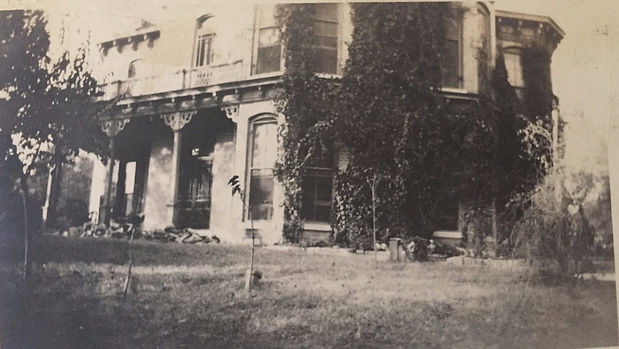
What began as a frontier homestead became a lasting symbol of commitment—to place, to purpose, and to a city finding its way.


Sallie Graham Smoot born 1873
Dr. Reverend Richmond Kelley Smoot
In 1876, Austin was a city on the brink—still rough around the edges, yet pulsing with possibility. With a population barely cresting 5,000, it was still more outpost than capital. But change was underway: the railroad had arrived just five years earlier, ushering in new people, ideas, and ambitions. Congress Avenue buzzed with activity, limestone and brick buildings rising between general stores and law offices. The dusty roads echoed with the sound of mule carts and voices from a growing mix of newcomers, freedmen, and civic leaders. It was a place in motion—and it caught the eye of Reverend Dr. Richmond Kelley Smoot.
Smoot, a respected Presbyterian minister from Bowling Green, Kentucky, first traveled to Austin in 1874. He came reluctantly, urged by the Southern Presbyterian Church to lend his experience to a small, struggling congregation. His wife, Sarah Jane Graham—known as Sallie—remained behind, tethered to a deep family history in Kentucky. The Reverend expected to return quickly, and did. But something about the wild Texas landscape, and one particular stretch of rolling green hills just west of the city, stayed with him.
When the call came again in 1876—this time to stay and lead the congregation permanently—Austin felt less like an assignment and more like a calling. Against the wishes of his Kentucky flock, but now with Sallie’s blessing, the Reverend returned to Austin for good, with his young family in tow.
He purchased five acres of open land just over a mile from the Capitol, a property blessed with a freshwater spring and sweeping views. He called it Pecan Place, a nod to the trees of his Kentucky youth, and began designing a home drawn from houses he had admired in his travels. Sallie, by then a mother of two with a third on the way, supported the move but remained skeptical of the pecans’ chances in Texas soil.
By the summer of 1877, dusty rose-colored bricks—fired by the Butler Brick Company just south at Barton Springs—were being hauled by mule-drawn wagons across what would become West Austin. Laid so quickly the bricks were still soft, they bear the fingerprints of the workers who built the home by hand. The house, completed by fall, stood proud with just four rooms and a grand staircase. The Smoots moved in on November 10, 1877.
By the following summer, as the bluebonnets bloomed and yet another batch of pecan saplings failed to thrive, Sallie gently suggested a new name. One better suited to their adopted landscape—Flower Hill.
It stuck.
From that point on, Flower Hill became both home and anchor for the Smoots, a place where history, family, faith, and civic life intertwined with the story of Austin itself. What began as a frontier homestead became a lasting symbol of commitment—to place, to purpose, and to a city finding its way.




